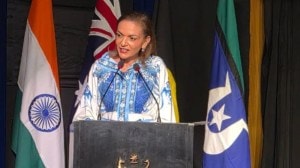Its important to weave DTC into financial planning
Housing,retirement,childrens education & marriage,healthcare and protection against an eventuality are important financial goals.
Housing,retirement,childrens education & marriage,healthcare and protection against an eventuality are important financial goals. The current version of the Direct Taxes Code (DTC) addresses these goals and asks one to reconsider where the savings are channelised.
The DTC will increase savings by broadening tax slabs. It will see zero taxation up to an annual income of Rs 2 lakh,10% on Rs 2-5 lakh,20% on Rs 5-10 lakh and 30% on incomes above Rs 10 lakh and the slabs for men and women will be identical. However,senior citizens will have zero taxation up to Rs 2.5 lakh.
Lets compare an investment of Rs 100 in two instrumentsthe first reduces taxable income while the second has no taxation benefit. If the first generates 15% return,we get Rs 115. The second instrument has to generate 64% return to reach an equivalent Rs 115 from its low base of Rs 70,assuming a 30% tax bracket. In our financial planning,tax relief products come first.
Section 80C of the DTC is a fresh one,loaded with pension products which qualify for totally tax free treatment of EEE (tax exempt at investment,accrual and withdrawal stages). These include new pension scheme,provident,gratuity,pension and superannuation funds with a combined ceiling of Rs 100,000. Axed products include ELSS,home loan principal,bank fixed deposit,ULIPs and NSC.
By keeping only long-term products in this category,it is ensured that our savings are long term. Among all qualifying products,I would rate the New Pension Scheme as the best. It is a very low-cost product and the only one with equity allocation,though with a maximum of 50%.
 However,many investors capable of more active management would have liked a higher equity allocation. In the fast-growing Indian economy,long-term savings in equities have considerable return potential. An opportunity is lost in dropping ELSS from section 80C. Senior citizens,ineligible for many pension products,are left without any suitable tax-reducing product. The lock-in period for ELSS could be increased to retain the long-term thrust of new initiatives.
However,many investors capable of more active management would have liked a higher equity allocation. In the fast-growing Indian economy,long-term savings in equities have considerable return potential. An opportunity is lost in dropping ELSS from section 80C. Senior citizens,ineligible for many pension products,are left without any suitable tax-reducing product. The lock-in period for ELSS could be increased to retain the long-term thrust of new initiatives.
Retaining long-term capital gains tax at zero for equities is a good move. Asset allocation decisions can be based on valuation and personal goals rather than grappling with another dimension of taxation. Short-term capital gains tax now stands at 50% of the marginal tax rate (5%,10% & 15%). Dividends from equity,however,will be taxed at 5%. There is a solution in the growth option of MF schemes. Whenever money is required,a few units could be redeemed rather than relying on dividends.
Education,health and life insurance goals are addressed in reducing taxable income up to Rs 50,000. Eligible products include pure life insurance products,health insurance premium for self,spouse,children and parents and tuition fees for the education of two children. Housing is facilitated by preserving reduction of taxable salary up to Rs 15,0000,with interest on home loans for construction,acquisition,repair or renovation.
Overall,it will be important to proactively weave DTC into our financial planning,which will increase the chances of achieving important goals.
* The writer is founder of http://www.financedoctor.in and author of Winning the Wealth Game



- 01
- 02
- 03
- 04
- 05




























